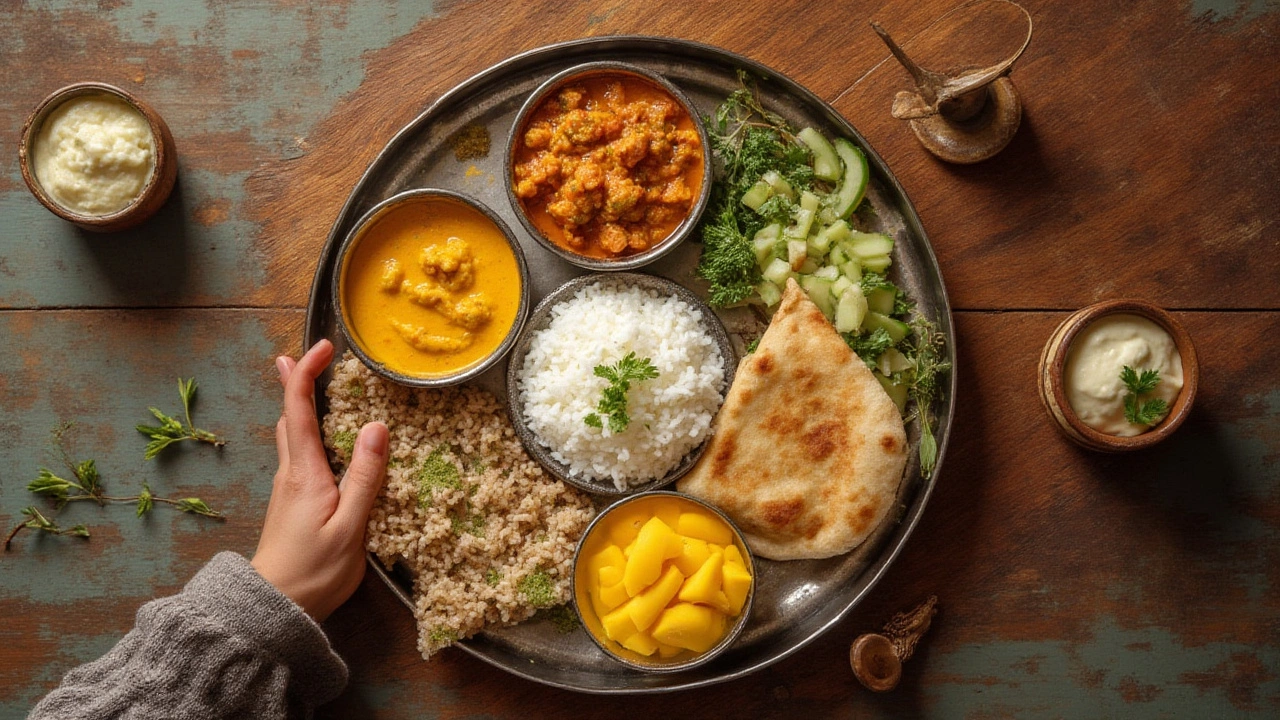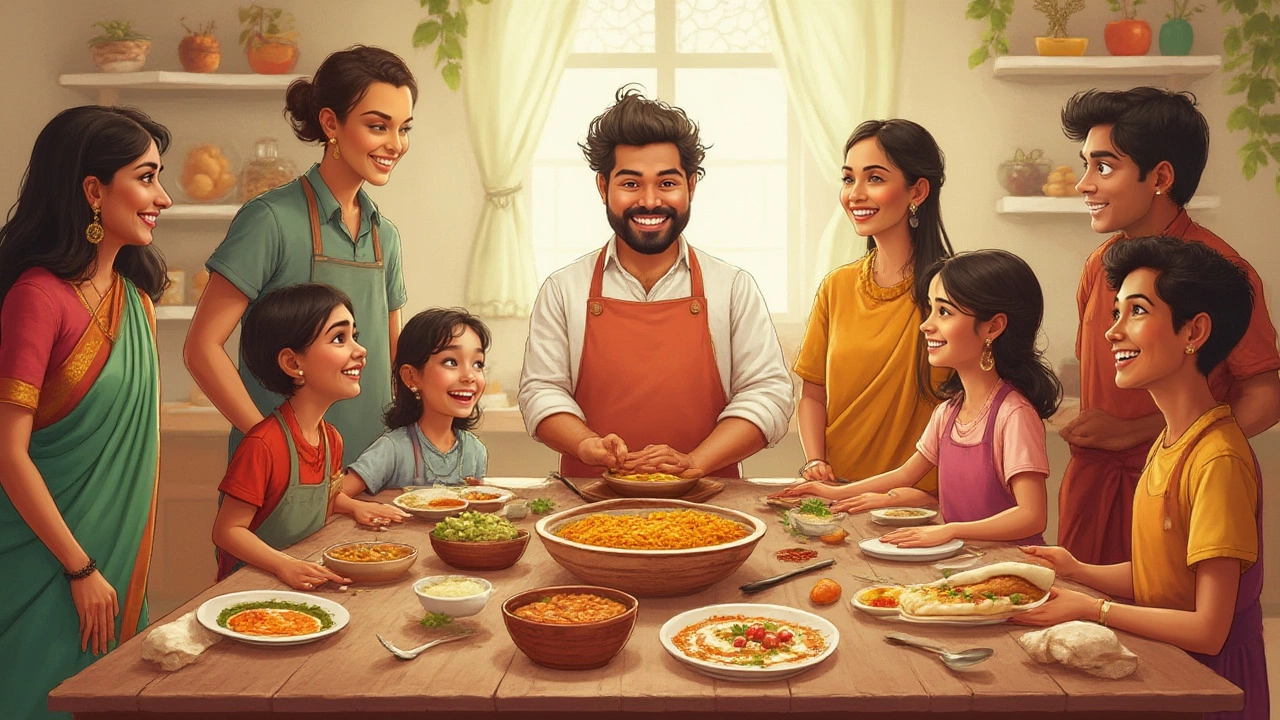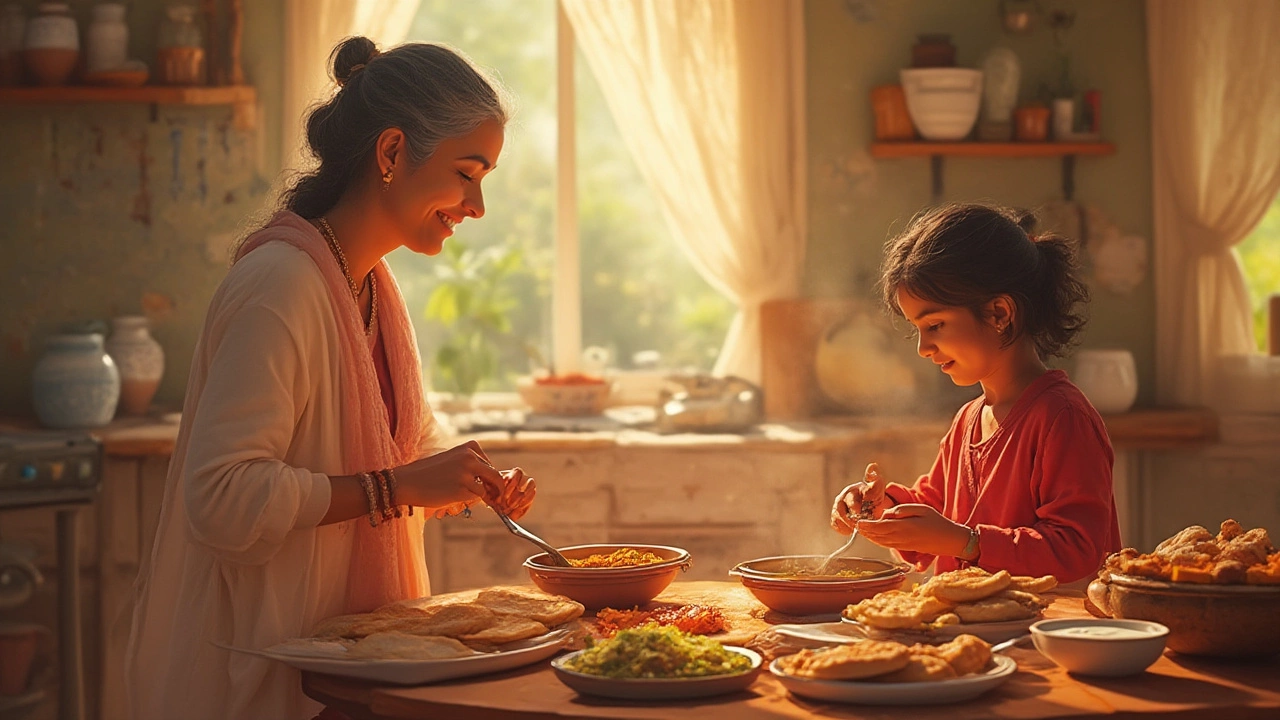Wondering if all Indian food brings a tsunami of heat? You’re not alone. It's easy to think every dish in India leans on spicy, but that’s just a myth. Actually, the Indian subcontinent serves an entire spectrum of flavors—from the fiery hot to the delightfully soothing. For newbies, kids, or anyone wishing for a break from burning tongues, there's plenty out there. Let’s dig into the world of mild Indian dishes, how to spot them, what makes them special, and why your tastebuds will thank you.
What Makes an Indian Dish Mild?
If you’re picturing buckets of red chili powder, don’t worry. Mild Indian dishes are about balancing subtle spices and rich textures without setting your mouth on fire. What keeps a dish “mild”? It’s three things: ingredients, cooking technique, and the kind of spices used. Most mild dishes skip the fresh green chilies and the sharpness of chili powder. Instead, they rely on warm, mellow spices—think coriander, cumin, cinnamon, cloves, and cardamom.
Another big factor is dairy. You’ll see yogurt, cream, ghee, or milk soothing everything down. That’s why dishes like korma, malai kofta, or even basic dal makhani feel gentle and rich. Vegetables, paneer (the Indian cottage cheese), and chicken often serve as the base for mild recipes. Stewing or slow cooking helps flavors develop without concentrating heat. Some cooks also de-seed and soak chilies to take off the edge, which lowers the “Scoville” rating of a dish. Eating with rice or soft Indian breads like naan helps, too, toning down any punch. In short, mild isn’t bland—it’s just less aggressive and a whole lot friendlier.
Now, here’s something surprising. Indians themselves don’t always crave spicy food. Plenty of regions—like Gujarat, Bengal, or Kashmir—favor tang, creaminess, or sweetness. A classic “navratan korma,” for example, literally means “nine gems”—it’s a gentle, nutty curry starring a jumble of vegetables and fruit. The trick is layering spices, not piling on heat. And if you’re thinking all Indian home kitchens double as volcanoes, you’ll be glad to know most households actually reserve really spicy food for festive days.
Top Mild Indian Dishes Loved Around the World
Some Indian dishes have earned a soft spot in the hearts of people everywhere—for their delicate flavors, not their spice levels. These crowd-pleasers pop up in restaurant menus from London to Singapore. Let’s check out a few standouts:
- Navratan Korma: This mixed-vegetable curry gets its creamy base from cashews or almonds and a splash of cream. It's a textbook case of very mild Indian dish—with warm, aromatic notes rather than sharp heat.
- Butter Chicken (Murgh Makhani): Succulent chicken cooked in a tomato-cream sauce, sweetened with honey or sugar. The color might look fierce, but the flavor says comfort, not fire.
- Dal Makhani: A slow-cooked black lentil stew, silky and subtle. The richness comes from butter and cream, not spice.
- Malai Kofta: These are soft paneer and potato balls, bathed in a smooth, almost dessert-like sauce. No trace of chili, but plenty of texture and aroma from cardamom, nutmeg, and cream.
- Naan and Paratha: Not a curry, but essential! Indian breads are the gentle spoon for anything spicy or mild. A plain naan brushed with ghee and a creamy dal on the side is as calming as it gets.
- Aloo Matar: Potatoes and peas, gently spiced with cumin, turmeric, and coriander. This is home food at its most unassuming (and kid-friendly).
- Shahi Paneer: Soft paneer cubes swimming in a rich, mildly-spiced tomato and cashew sauce.
Most restaurants are happy to dial down the heat on request—sometimes a “mild” curry is just one chef’s nod away. But in India, truly mild curries tend to be thick, comforting, and smooth. Anything labeled “malai” or “makhani” is a safe bet.

Why Mild Indian Dishes Appeal to Everyone (Not Just Kids)
It’s not just spice-phobes or toddlers who love mild food. People of all ages, especially folks with sensitive stomachs or health concerns, find Indian mild dishes gorgeous for a reason. The smart use of spices like ginger, turmeric, and cumin isn’t just about taste—it’s believed to help with digestion, warm you up without overwhelming your senses, and keep inflammation at bay. Creamy sauces often include nuts and dairy, both healthy boosters if eaten in moderation. For athletes or those nursing a cold, a bowl of gentle dal and rice is practically doctor’s advice in India.
Mild curries are big at weddings and family get-togethers, too. When you have dozens (or hundreds) of people at a function, it’s easier to keep the menu on the milder side. That way, everyone’s happy—grandparents, kids, and the random uncle who claims to ‘hate spice’ but still loads up on the korma.
Here’s a fun fact: even the Indian Railways, one of the largest train operators in the world, offers mostly mild curries as part of its standard vegetarian and non-vegetarian meals. It’s about feeding millions with something universally pleasing, and nothing beats a mild dal with steamed rice for that.
There’s also room to play at home. Want to cut the heat even more? Add extra coconut milk, yogurt, or a spoon of honey. Double up on potatoes, skip the chilies, or just reach for bread instead of rice. Indian food isn’t as strict as some cuisines. Adapt, modify, and make it your own—the “rules” are more like suggestions.
Obviously, Indian cuisine also offers sweets like ras malai or kheer that carry no heat at all, but that’s another story for another day.
How to Recognize and Order a Mild Indian Dish
If words like “Vindaloo” or “Madras” make you sweat, stick to these safer choices below. Indian menus are full of buzzwords, and once you crack their code, you can avoid heat (or at least see it coming). Here are some quick tips:
- Look for “malai,” “makhani,” “butter,” “korma,” “shahi,” and “navratan” in the dish’s name—these almost always signal a gentle, creamy curry.
- Anything with “vindaloo,” “chettinad,” “madras,” or “jalfrezi” is likely spicier; best to skip if you’re avoiding heat.
- Legume and lentil dishes like “Dal Makhani” or “Dal Tadka” are usually milder, especially the cream-heavy North Indian varieties.
- If you’re eating out, ask for “no chili” or “extra mild.” Chefs in Indian restaurants abroad get these requests all the time—they won’t bat an eye.
- Rice dishes like “Jeera Rice” or “Vegetable Pulao” are naturally mild bases for any main course.
- Breads such as naan, roti, and paratha are perfect to pair with mild sides or use to “dilute” any lingering heat.
Check out this quick comparison table for the spice level of popular Indian dishes:
| Dish | Region | Main Ingredient | Typical Spice Level |
|---|---|---|---|
| Navratan Korma | North India | Mixed Vegetables | Very Mild |
| Butter Chicken | Punjab | Chicken | Mild |
| Malai Kofta | North India | Paneer & Potato | Very Mild |
| Dal Makhani | North India | Black Lentils | Mild |
| Paneer Tikka Masala | North India | Paneer | Medium |
| Chicken Vindaloo | Goa | Chicken | Hot |
Notice how the region matters, too. Southern Indian curries use more chilies and mustard seeds. The north is all about lush, buttery sauces. Stick to northern favorites if you want to eat gently.

Simple Recipes to Try At Home
If you’re ready to make your kitchen smell amazing (but not like a chili pepper warehouse), mild Indian food is where you start. Here’s a super basic navratan korma recipe you can follow at home, without hunting for obscure ingredients:
- Vegetables: Use what you have! Carrots, peas, potatoes, bell peppers, a handful of cashews or raisins.
- Sauce: Blend 1/2 cup cashews with 1 cup milk into a thick paste. Sauté a chopped onion, then add a clove of minced garlic, a teaspoon of ginger, and half a teaspoon each of cumin, coriander, and turmeric.
- Put in the vegetables, cover with water, and simmer gently. Add the nut-milk blend, let it bubble for a few minutes, and finish with a dollop of cream. Salt and sugar to taste.
- Finish with chopped cilantro and serve with warm naan or rice.
No need to stress if you don’t have every spice—cumin and coriander carry a long way. If you want it richer, add a little more cream or yogurt. If you want real crunch, toss some toasted cashews on top. That’s it—you’ve just made a classic Indian dish the mild way.
For something even simpler, try this gentle dal recipe:
- Simmer a cup of red lentils with two cups water until soft.
- In a small skillet, heat ghee or any oil, add mustard seeds (optional), then a pinch of cumin, half an onion, and one tomato chopped.
- Sauté until soft, mix with your dal, and season with salt, turmeric, and a touch of lemon juice. No chili required.
A lot of Indian home cooking follows this logic: flavor first, heat optional. Chopped ginger and fresh herbs bring brightness. Yogurt, coconut milk, and even mashed potatoes add silkiness. Most importantly—keep tasting and adjusting. Your palate is the best judge.
So next time someone claims “all Indian food is spicy,” you’ve got the facts, history, and maybe even a hot (mild) curry ready. See? Flavor doesn’t need to come with a fire extinguisher. Mild Indian food is a warm hug on a plate—and sometimes, that’s exactly what you want.
